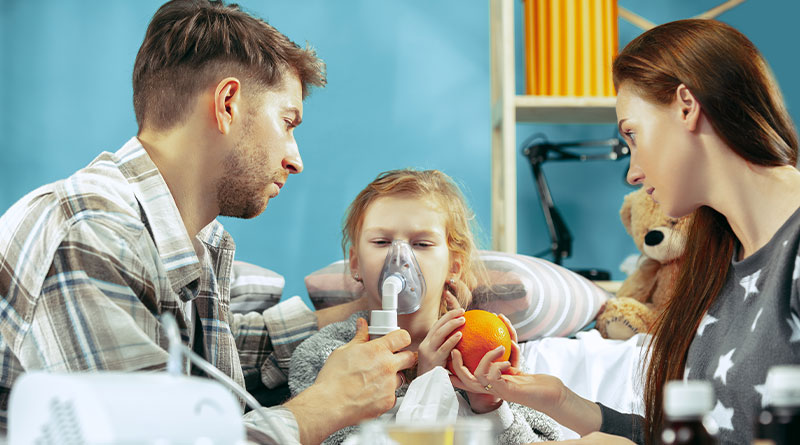The filthy living circumstances, including public sanitation issues and a general lack of cleanliness, contribute to the rapid increase in communicable diseases. Therefore, it is crucial to learn about prevalent communicable diseases to keep our families safe and raise awareness in the community.
If you or a loved one are ever diagnosed with a communicable disease, having health insurance is crucial to ensure you can afford timely treatment. How, then, can you hope to make sense of it all? If you want to know about the 10 Communicable diseases that exist, keep on reading this article.
What is a Communicable Disease?
An infectious disease can be spread by personal contact with an affected person. Disease transmission can also occur indirectly, such as infected items, food, etc. There is a growing cause for alarm over the ever-evolving list of communicable diseases.
Find 10 Communicable Diseases
Covid – 19 (Coronavirus)
The coronavirus is a newly emerging infectious illness with a significant global impact. The SARS-CoV-2 virus is the culprit here. Coronavirus causes mild to moderate respiratory disease in humans. Most healthy people won’t need any particular treatment for the virus, but those with preexisting conditions like diabetes or heart disease may not be so lucky.
Infected persons can spread it when they sneeze, cough, or talk. Keeping your distance from others, washing your hands frequently, wearing a mask, and isolating yourself when sick are all good ways to avoid contracting a contagious disease. It’s one of India’s top 10 infectious diseases; therefore, stopping its spread is a priority.
Malaria
Parasites in the saliva of infected Anopheles mosquitoes can cause this potentially fatal disease, which is spread to humans through bites. Headaches, chills, and fever are among the most common signs.
The infected mosquito may not cause symptoms for 10 to 15 days. If it is malaria, diagnosis can be challenging. It can cause serious disease or death if not handled. Malaria is especially dangerous for infants, pregnant women, children younger than 5 years old, and HIV patients.
Typhoid
Salmonella typhi, the bacteria that causes typhoid, is easily spreadable by ingested contaminated water or food. Weakness, headache, nausea, protracted fever, abdominal pain, constipation, and diarrhea are all possible outcomes. Infections are typically treated with antibiotics.
However, treatment is made more difficult by the spread of antibiotic resistance. It’s more common when people don’t have access to clean water and proper sanitation.
Tuberculosis
Mycobacterium tuberculosis is the causative agent of tuberculosis, one of the communicable disease among the Communicable diseases that mostly affects the lungs. Infected persons can spread it to others when they cough, sneeze, or spit.
A weakened immune system, diabetes, or tobacco use significantly increases the risk of acquiring tuberculosis. A moderate cough, fever, night sweats, and initial weight loss could be the first signs. It may delay diagnosis and increase the likelihood of transmission to other persons.
The infected person has a 5- to 15-person incubation period. Tuberculosis can be cured with antimicrobial medicines.
Hepatitis
Liver inflammation is a symptom of several infectious diseases, including hepatitis. If not addressed, it can progress to fibrosis, cirrhosis, liver cancer, and other serious conditions. The Hepatitis virus most commonly causes hepatitis, though it can also be brought on by other illnesses or by consuming toxic chemicals like alcohol or drugs.
Ingesting polluted water orally can cause a form of Hepatitis that resolves on its own. Types A, B, C, D, and E all relate to distinct strains of the Hepatitis virus.
Infectious diarrhea
Among children younger than 5, it is a major killer. The illness can linger for days, leaving the body dehydrated and, in severe cases, fatally low on fluids.
When viruses, bacteria, or parasites attack the intestines, diarrhea results. Lack of hygiene allows the disease to spread through tainted food and water and from person to person.
Influenza (Flu)
Influenza, or the flu, is a contagious respiratory infection caused by influenza viruses and spread through the air. Fever, sore throat, runny nose, headache, lethargy, and body aches are common flu symptoms.
Children are disproportionately affected by influenza infections compared to the elderly. The incubation period for transmission is one day before the development of symptoms to five to seven days following the onset of illness in the infected person.
Dengue
The bite of an infected Aedes aegypti mosquito can cause a severe flu-like illness known as dengue fever. The virus that causes dengue fever can be passed from mother to child and spread by blood and needles. Besides fever, dengue can cause uncomfortable side effects like nausea, vomiting, a rash, eye pain, and muscle, bones, or joints.
Severe dengue is characterized by bleeding from the nose or gums, vomiting blood, or blood in the stool, and is more common in infants and pregnant women.
Although the CDC reports that there is currently no cure for dengue, it is still important to address the disease’s symptoms and seek medical attention very once.
Athlete’s Foot
An athlete’s foot is a fungal infection of the foot’s skin that affects many people. Symptoms include white areas between the toes that may be painful or irritating.
Contact with an infected person or surface can spread an athlete’s foot to healthy individuals. An athlete’s foot is an infection that can be contracted by being barefoot in wet environments, including locker rooms, showers, and swimming pools.
E. coli and Salmonella Infection
Salmonella and Escherichia coli (E. coli) are two non-typhoidal bacteria that can infect the digestive tract and cause illness. Another species of Salmonella that can trigger typhoid is Salmonella typhi.
The most common ways to get sick are eating raw meat and eggs, eating unclean vegetables, and drinking contaminated water.
Conclusion
Due to poor sanitation and education, the prevalence of communicable diseases in India continues to rise. Most diseases have subtle signs that are difficult to spot. Unfortunately, it can be lethal if left untreated.
Therefore, it is crucial to know the signs and symptoms of the top 10 Communicable diseases and take appropriate precautions against them.
Sahil Sachdeva is the Founder of curemedoc.com and a Digital Marketing professional with 6+ years of experience. If you need help in Content writing and want to increase your website ranking, connect with him, as he has some premium websites where you can share blogs with DoFollow links and increase your website’s ranking on Google.





